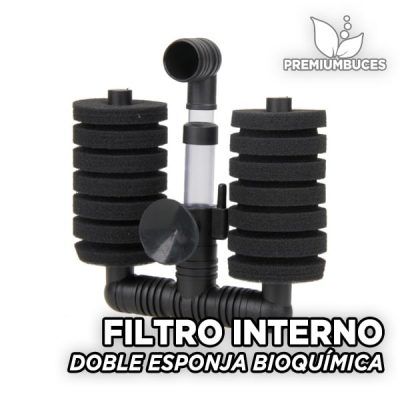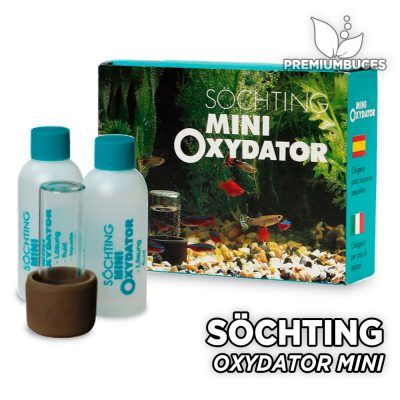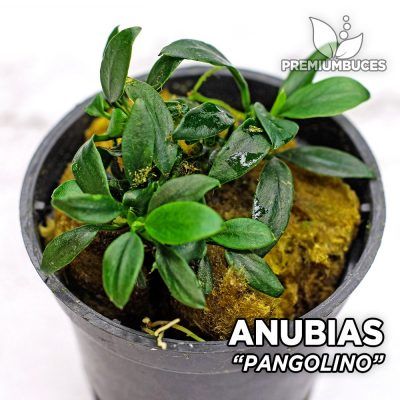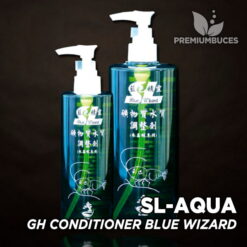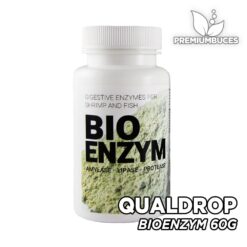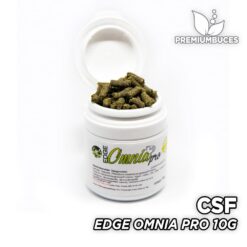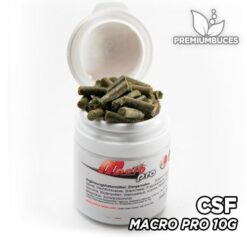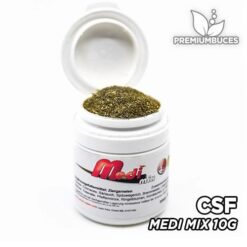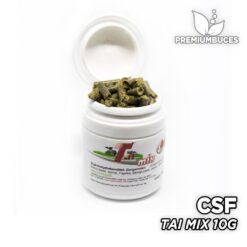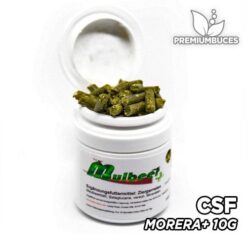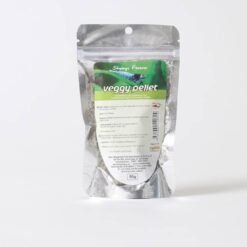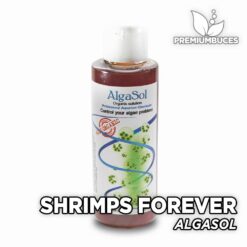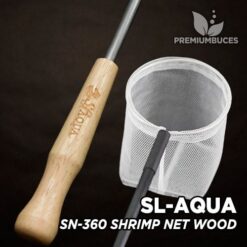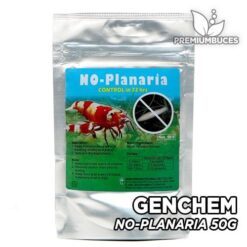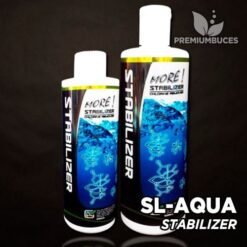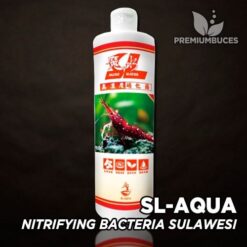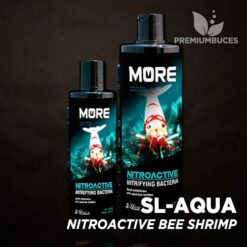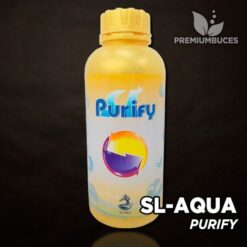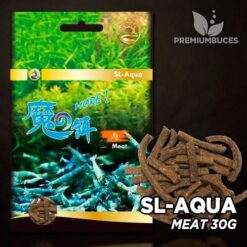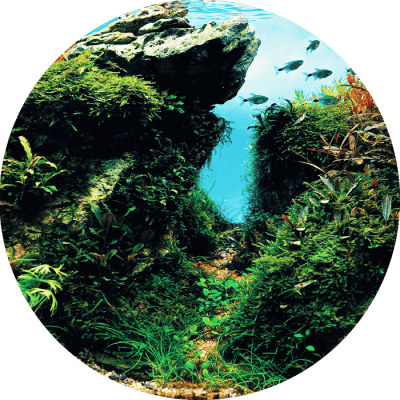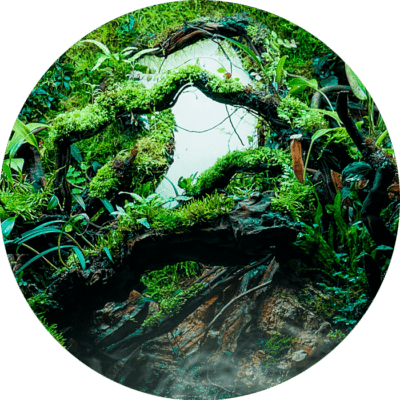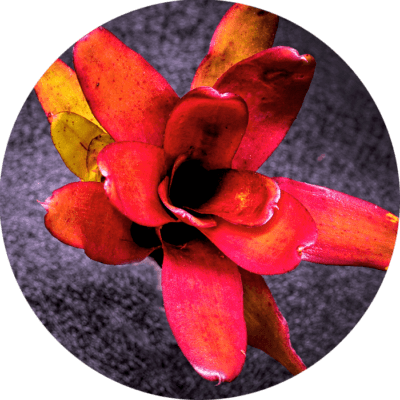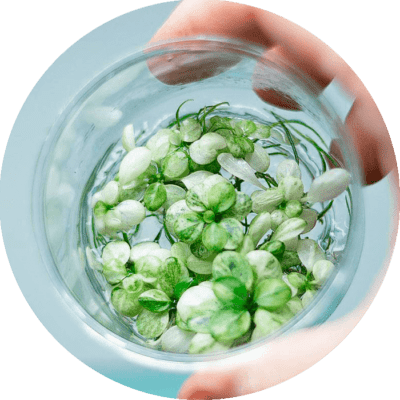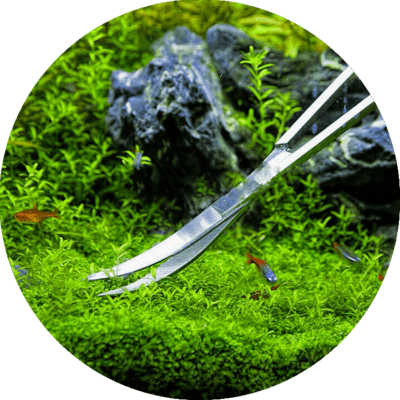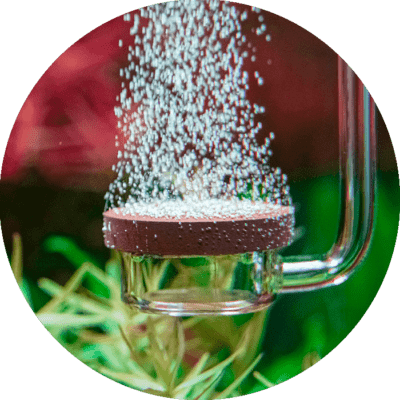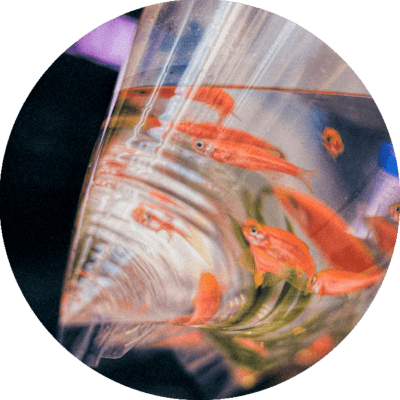Here we will describe all the points to keep in mind to maintain and reproduce Aquarium Prawns successfully.
HOW TO MAINTAIN A GAMBARIO
All the Ornamental Aquarium Prawns They have been inspiring aquarists for several years, now freshwater prawns are very common in the aquarium hobby. Especially for those who keep Nano Aquariums. These smaller aquariums, with a volume smaller than a 60-liter aquarium, are excellent for keeping these small invertebrates and discovering their disturbing behaviors, these aquariums dedicated solely to shrimp are called Prawns.
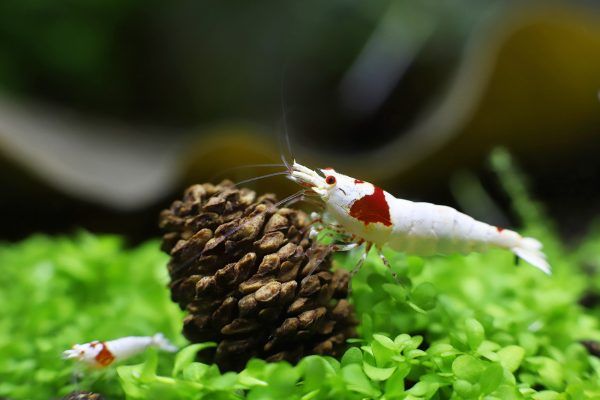
These little animals are useful as organic matter degradants and cleaners, apart from being attractive by themselves, offering the opportunity to observe their curious behavior. Prawns too they reproduce easily in an aquarium, so you will be able to see their entire life cycle from the time a female carries eggs until they hatch in small shrimp. As they grow, they will shed, a process in which they shed their old shells and grow a new one that is better suited to their size. Raising and keeping shrimp it is very rewarding. However, especially if you have just discovered this world, you should pay attention to some things that are important to the maintenance of aquarium shrimp. We have created this complete guide showing an overview of the most important points for the Caridin and Neocaridin prawn maintenance in addition to its data sheet.
CARIDINA PRAWNS SHEET
| Name | Caridina |
| Scientific name | Cardina cf. cantonensis |
| Aquarium size (optimum) | 40 liters |
| Difficulty | Media |
| Breeding | Median |
| Size | 2.5 - 3cm |
| Optimum temperature | 21 - 23 ° C |
| Optimal pH | 6.6 – 6.9 |
| Optimal GH | 4 – 6 |
| Optimal KH | 0 – 1 |
| Optimal TDS | 140-160 |
| Nitrate | Less than 20ppm |
| Diet | Algae Eater / Omnivore |
| Behavior | Pacifico |
| Life expectancy | 1-2 years |
NEOCARIDINE PRAWNS SHEET
| Name | Neocaridina |
| Scientific name | Neocaridine cf. Davidi |
| Size Aquarius (optimum) | 40 liters |
| Difficulty | Easy |
| Breeding | High |
| Size | 2.5 - 3cm |
| Optimum temperature | 18 - 23 ° C |
| Optimal pH | 6.8 – 7.3 |
| Optimal GH | 3 – 4 |
| Optimal KH | 8-10 |
| Optimal TDS | 210-230 |
| Nitrate | Less than 40ppm |
| Diet | Algae Eater / Omnivore |
| Behavior | Pacifico |
| Life expectancy | 2 years |
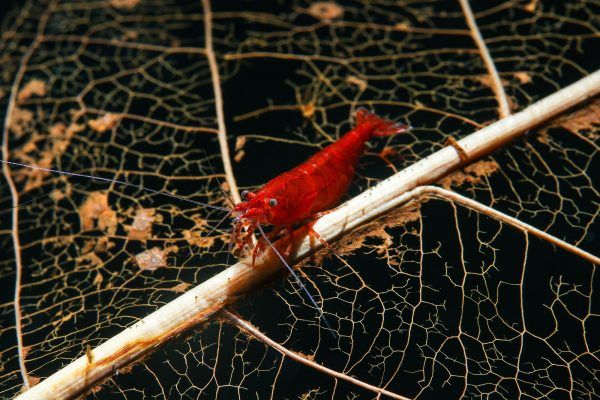
CYCLE OF THE GAMBARIO
Before adding the shrimp, the aquarium must be cycled. This can take 5 to 7 weeks and will require some testing to check nitrate, nitrite and ammonium levels in the aquarium. For Caridina type prawns It is advisable to extend the cycling time a couple of weeks more than the traditional month that is usually given in aquarium hobby. The heaters must be added to the aquarium and be plugged in until the cycling process is complete, the conditions in water and temperature parameters must be the same as those that will be maintained once we add the shrimp, this is because the beneficial bacteria that are they will settle in the filter during this time they must be developed adapted to the final conditions that you want to maintain. The lighting does not need to be on during this process.
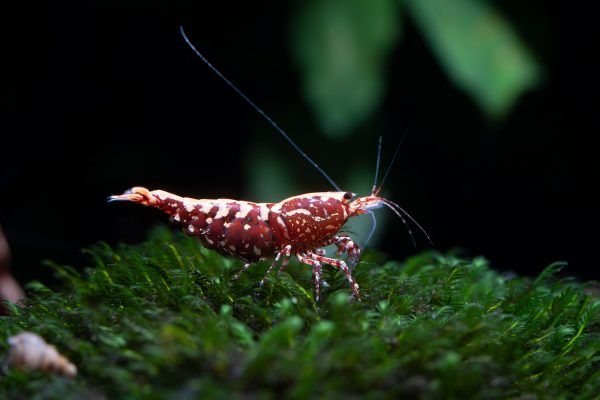
ACCLIMATION OF AQUARIUM PRAWNS
When adding new shrimp to an already cycled aquarium, it is important to take the appropriate steps to introduce and acclimatize the prawns. This process is very stressful for shrimp. The acclimatization to the new aquarium It is very important as it gives them time to adjust to the temperature and parameters of your aquarium. By doing this correctly, you will reduce the chances of shock or death of your new shrimp, which is one of the main reasons for casualties.
La drip acclimatization Slow helps reduce the contrast of the parameter change, since a sudden change will affect the shrimp and if they do not die in the process they will have a shorter life expectancy or will not feed due to stress. Thus, acclimatize shrimp and invertebrates by the drip method it is essential to give them a chance to survive in their new environment.
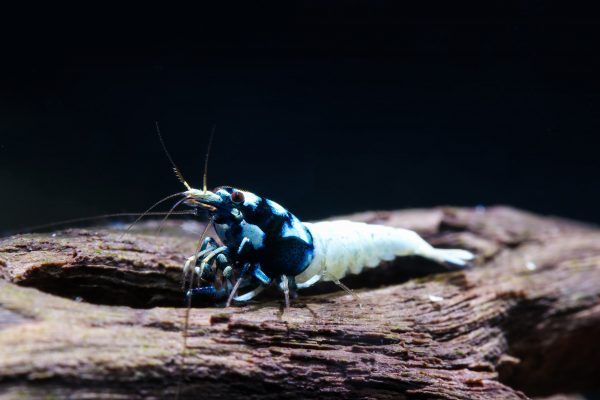
For drip acclimatization We can use a bucket or container to place the new prawns, and through a thin tube (like those of an aerator or CO2) we make a knot that will regulate the amount of water that passes through it, we will fill the container with water from the aquarium With the tube like a siphon, the recommended drip rate can be 2 or 3 drops per second, This process it should last a few hours (around 4) until the parameters of the aquarium water and the container with the new prawns are practically the same, to measure these parameters we can help ourselves with a TDS (Total Dissolved Salts) meter. Once we have finished this process we can already introduce the prawns into the aquarium. For Neocaridin-type prawns, which are less sensitive to parameter changes, this process can be sped up a bit.
WATER CHANGES
Good water quality is very important in shrimp aquariums, a 15% water change in the shrimp every week to keep most species healthy. The new water must have an identical temperature and should be dechlorinated if it contains tap water in the mix, the tap water in your city contains chlorine or what is the same, it is disinfected with chloramine, which is harmful to all living things in the aquarium and that is why it is important to use a conditioner.
At each weekly water change we can take advantage of siphon the substrate a little, taking great care not to absorb the newborn prawns with the siphon or tube as well we will remove decomposing organic matter and dirt that is between the substrate, you should not siphon the entire substrate at once, it is best siphon a small part, the next week another part and the next another, so we rotate and allow time for the biofilm and beneficial bacteria that inhabit the ground. For very sensitive prawn species, it is recommended to change the water with a dropper.
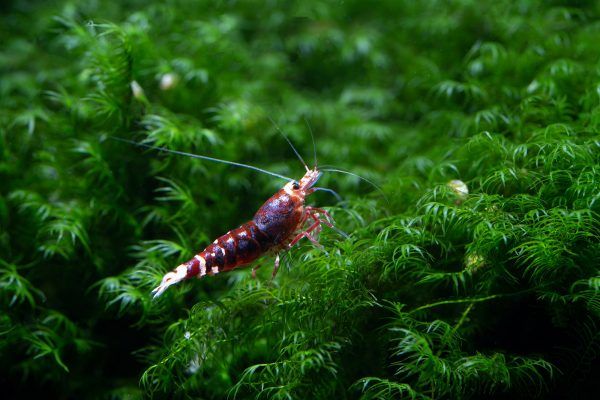
FEEDING OF CARIDINES AND NEOCARIDINES
All the prawns in an aquarium They are quite useful: By degrading the food that fish waste, these little scavengers provide better water quality and less organic contamination. Furthermore, in an aquarium, as well as in its natural biotopes, shrimps chew on parts of dead plants, manure, freshly killed fish, but also carrion and even fish droppings. Fish do not assimilate nutrients very efficiently, and therefore their droppings are still quite nutritious. If the prawns do not feed on them, they would serve as food for snails (unwanted) and algae.
Prawns also graze for hours on algae films and microbial biofilms. If you look closely at its jaws and specifically its small claws, you will see that they are covered with strong bristles, which are ideal for scratching the growth of biofilms They appear on stones and other surfaces.
There are a lot of aquarium shrimp feed ready to use available on the market. A complete main food can be recognized quite easily: It contains not only vegetable ingredients, but also a quantity of protein. You should always make sure that the protein comes from sources that would normally be available to shrimp in the wild. The biofilms that prawns graze are rich in protein due to the large number of bacteria that live in it. We can contribute our own biofilm to the aquarium thanks to products such as:
Two or three times a week, especially in Caridina prawnsAn additional high protein supplemental food should be given in addition to your regular main food. The powdered prawn food spreads very well throughout the aquarium, so all newborn prawns and juveniles get their share. Mineral foods provide animals with important nutrients and, obviously, minerals they need to build their shells, something that will come in handy when molting. This is also administered once or twice a week.
For a healthy diet in Caridines and Neocaridines, you must provide a varied diet. We have many kinds of food available in our online store, there are basic or complete foods and nutritional supplements that will help us provide a much more complete and balanced nutrient base. The glass food dishes to prevent food scraps from sinking into the substrate and breaking down there. These are simply placed on a hard surface or somewhere on the substrate. Leftovers left without food they should be removed after a few hours to avoid contaminating the water with organic waste.
As a base food we can use:
Pre-rinsed fresh vegetables are an excellent shrimp food and highly appreciated by them. Zucchini, green leafy vegetables, and peas are preferred by them. Carrot is also sometimes recommended because it can improve the color of aquarium shrimp. You can also feed them frozen foods, seaweed pellets and commercial fish foods, these in moderation.
As a dietary supplement, we can use all the options offered by shrimp food brands where the properties of its main component are preserved in their manufacturing process, among many others we have:
- Saltybee DS Pure Spinat Spinach
- Saltybee DS Pure Line Brennessel Nettle
- CSF Pure Hokkaido Pumpkin
- CSF Paprika +
- Glasgarten Shrimp Snacks Snow Flakes
- SL-Aqua Vegetable
- Shrimp Nature Plant
As mentioned before, shrimp are very sensitive to changes in water quality. This means that any uneaten food should be removed in a few hours to prevent rot, you should also avoid overfeeding.
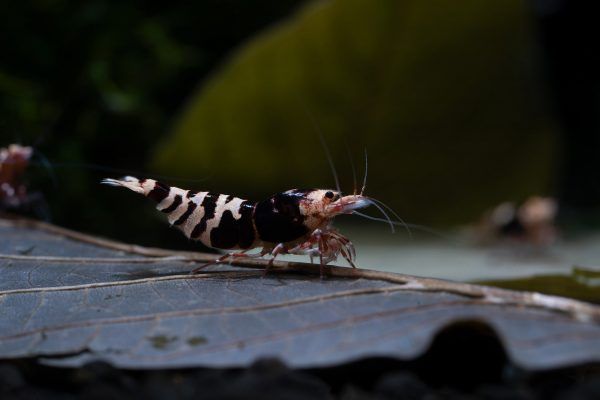
GAMBARIUM SIZE
All the Aquarium Prawns can be kept in a small Nano Aquarium. Because these animals sometimes reproduce very quickly, especially in the case of Neocaridines, the size of the aquarium should not be too small. The most recommended are aquariums of around 40 liters. With this ability we ensure that water parameters are more stable and there are no sudden changes that could affect the most delicate prawns. The larger the aquarium, the more stable the parameters will be. In smaller aquariums, even the slightest fluctuation can increase any of the water parameters very quickly. Because of this, the general idea is that bigger is better. Larger aquariums will be easier to maintain and more stable. Smaller aquariums will limit the number of shrimp you can keep, and if the aquarium is overcrowdedPrawns are likely to stop breeding.
It's also important to keep in mind the shrimp species you plan to keep, as some are more sensitive to change than others.
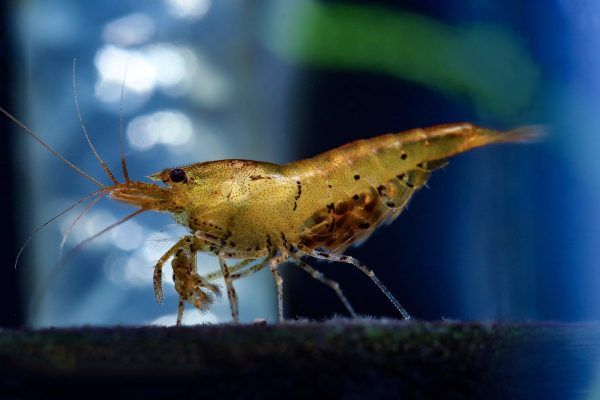
GAMBARIO FILTERS
All the shrimp and aquarium invertebrates in general they are very sensitive to pollutants and heavy metals. To keep the water as low in contaminants as possible, the biological filtration it is especially important. This means that the filter material it must provide enough space to facilitate colonization of denitrifying and pollutant degrading bacteria. This is important to keep Caridine prawns, which are much more sensitive to nitrogenous compounds than Neocaridin prawns. In principle, the standard size of an external filter is sufficient for this purpose. Do you want to increase the capacity of the biological filter? Highly porous filter materials such as NeoMedia Aquarium or Seachem Matrix are a good choice. For keep Neocaridines a backpack filter or smaller capacity may suffice.
It is very common to add in these shrimp an internal sponge filter, these have a very simple operation and apart from increasing the oxygen dissolved in water, in their sponges are stored bacteria and layers of microorganisms where prawns can feed.
The internal double sponge filters moved by a aerator they offer a biochemical filtration, aeration and prawns can graze microorganisms that appear on the sponge. If you decide to use a sponge filter, a double head sponge filter. This way, you can clean or replace one of the sponges while leaving the other. This will ensure that you keep plenty of beneficial bacteria in the filter and you don't risk damaging the bacterial colony.
For the successful reproduction of these prawns, it must be ensured that the baby prawns, are not sucked in by the filter pump. For this purpose, it is possible to add a protective mesh tube to the inlet of the most common external filters, and for internal filters a piece of foam can be added (such as that used for mechanical filtration) Here you can find these protective nets.
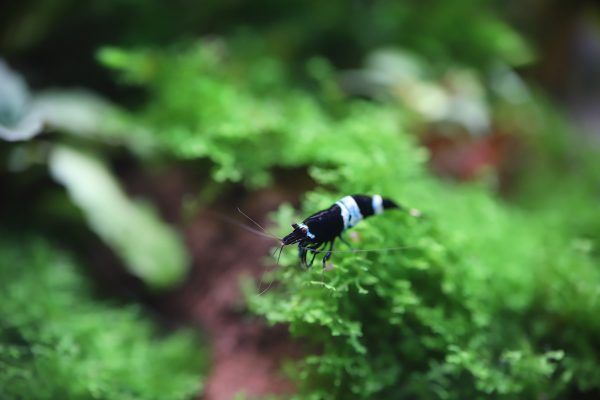
PRAWN LIGHTING
Prawns don't need too strong lighting. That would be more important for demanding aquatic plants and their needs. On the contrary, without sufficient hiding places, prawns do not feel comfortable in bright lighting conditions, they become more shy. Therefore, you must ensure that there are always enough shelters and shady areas provided by plants and decorations. A low power lighting it is enough for undemanding plants but if you want to keep more demanding aquatic plants together with the prawns, you should think about a more powerful lighting. Besides, with a slightly more intense light we can better appreciate the color patterns of the prawns, which can be something very interesting for the fan.
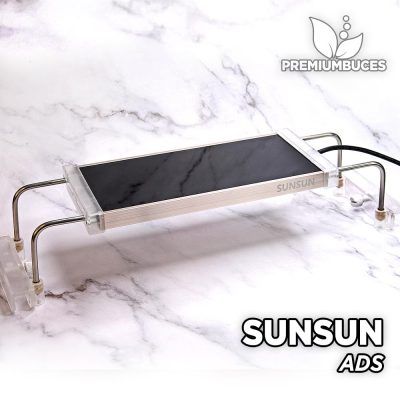
CARIDINE SUBSTRATE
For Neocaridines as Red Cherry prawns (Neocaridine Davidi) that can be kept in harder water, an inert substrate of the sand or gravel type is sufficient. But the more demanding prawns like the type Crystal Red CRS (Caridina Logemanni) prefer soft, acidic water. That is why the active substrates that keep both the pH value as the carbonate hardness, are the standard substrate for prawn maintenance requiring soft water. This substrate also has a positive effect on the growth of aquatic plants, houses beneficial bacteria and enriches the water with humic and fulvic acids. This is especially important for reproduction of Caridinas and newborn shrimp survival rate. The disadvantage of active substrates is that they must be replaced once they have been used up. Most of the active substrates they will last on average a year until they have to be changed, from there, they will no longer have effectiveness and their PH will begin to rise.
Specifically designed Caridinas shrimp substrates such as Shrirakura Red Bee Sand, Glasgarten Environment, Aquarius Neo Soil Shrimp or the Shrimp Help substrate do not come with previously added nutrients. These aquariums can be populated with shrimp earlier. They work in the aquarium exactly like the nutritious substrates Normal, however, nutrient substrates often emit a lot of ammonium (NH4) early in their shelf life, and shrimp should only be introduced into the aquarium when the ammonium level returns to normal, at 0,25mg / l or less.
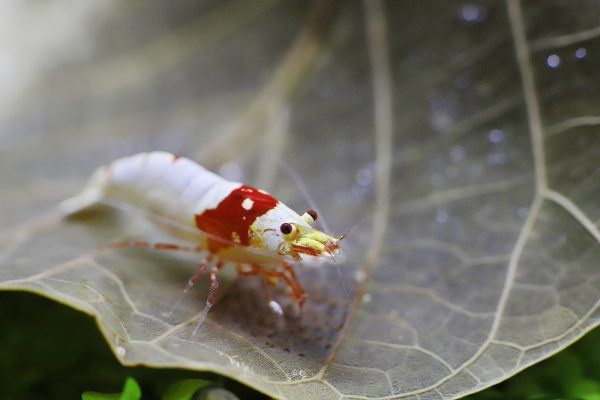
SALTS FOR PRAWNS AND WATER CONDITIONERS
Different types of prawn salts depending on your needs. These are used to treat demineralized watereg from an osmosis system or a demineralizer. Adjust the hardness parameters (total and carbonate hardness) to ideal values for the respective shrimp species. In addition, the water is enriched with trace elements, which are important for the health of the aquarium inhabitants. Useful aquatic plants and bacteria also benefit from this. Ensuring an ecological and stable system in the shrimp. For this purpose you can use the prawn salts:
From the brand Saltyshrimp
- Bee Shrimp Mineral GH + for prawns Caridina
- Shrimp Mineral GH / KH + for prawns Neocaridina
- Sulawesi Mineral 7,5 for Sulawesi prawns
- Sulawesi Mineral 8,5 for Sulawesi prawns
Saltybee brand

If part of the tap water is used, it is recommended to use antichlorides that also neutralize heavy metals, copper, ammonia, nitrite and nitrate on the table:
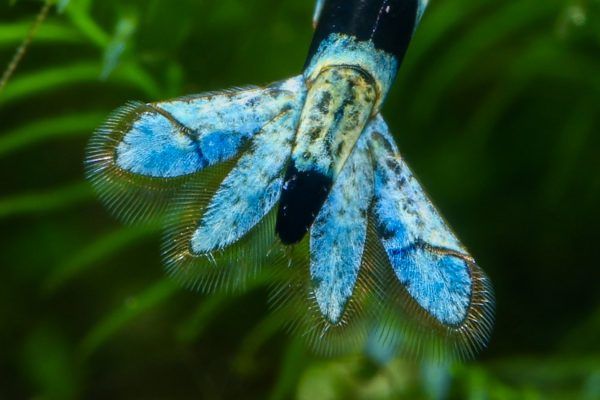
DISSOLVED TDS SALES METER
Un TDS meter is one of the tools for prawn maintenance more useful than we have. In a quick and easy way we can measure (in seconds) the amount of total dissolved solids in shrimp, it is a very important parameter to monitor when they are kept aquarium prawns. Different shrimp species They prefer different ranges of TDS, such as Caridinas or Sulawesi prawns.
If your TDS in the aquarium is too low or too high, it will stress the shrimp and shorten its life. Sudden changes in TDS will also harm shrimp and possibly end up dying. So you should have this tool and check your TDS level regularly. It is especially important if you use remineralized RO (osmosis) water when making water changes in the shrimp. You can measure the TDS in the aquarium and then remineralize your RO water to match. In this way, there will be no large fluctuations that stress the shrimp. Stability is the key.
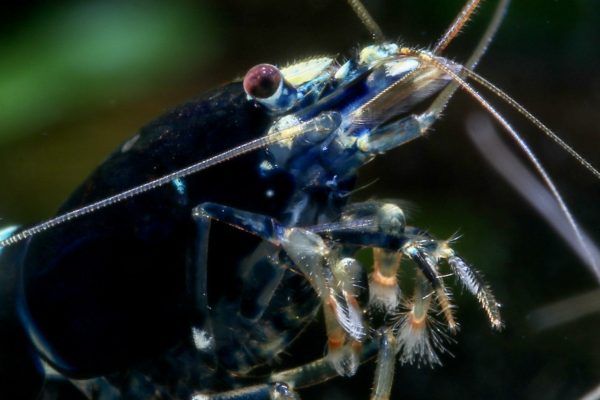
BACTERIA PRODUCTS
Bacterial products are very useful to select the bacteria that will inhabit the aquarium and filter. Basically, it is desirable that there are many beneficial bacteria in the aquarium competing with the harmful bacteria that could harm the prawns. Beneficial bacteria are responsible for recycling aquarium water and keeping ammonia, nitrites, and nitrates at bay. They are also important for biofilm formation, in which prawns of all ages like to graze. This is especially important for prawn hatchlings, which tend to hide during the first weeks of life. If you have a suitable biofilm, the baby prawns have access to a lot of food close to them until they are ready to go through the rest of the aquarium.
As bacteria products we can use:
- SL-Aqua Milione Bacteria Powder
- Ebitai Bacter +
- Shrimp Nature Bacteria
- Qualdrop Biobacter
- Qualdrop Bioprobiotc
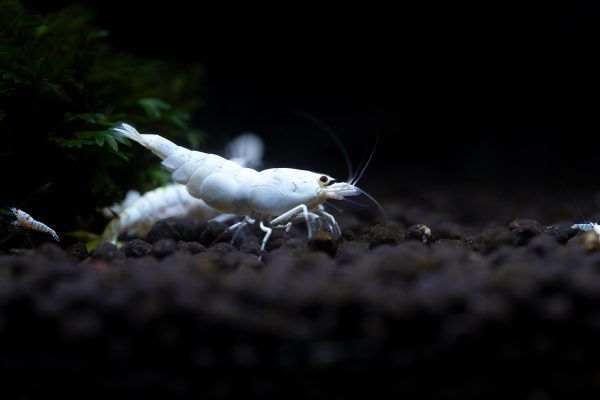
TEMPERATURE AND OXYGENATION
With some exceptions, the aquarium prawns They do not need high temperatures they can be kept in relatively cold water. Its tolerance range is quite wide, from approximately 16 to 27ºC.
For Neocaridin prawns the recommended temperature is from 16 to 21ºC, while for Caridines it is from 21 to 23ºC. Therefore, a aquarium without heater it is usually sufficient if the ambient temperature does not deviate too much from these parameters. Natural fluctuations throughout the day, but also observed throughout the year, are quite beneficial and promote the health of these animals. In any case, it is recommended check the temperature with a thermometer. A little heater for the colder winter months and maybe a fan in the summer months pointing to the surface of the water makes sense if the temperature reaches its limits. High temperatures (but always within the recommendations) lead to a faster life cycle, which means faster growth and more reproduction, but also a much shorter shelf life.
Purifiers like Söchting Oxydator They have been tried and tested and are well known to the prawn fan community. These devices guarantee particularly clean water, free of germs and enrich it with active oxygen. Due to their small size, these devices do not attract much attention inside the aquarium.
El Söchting Oxydator uses hydrogen peroxide (peroxide) to oxygenate the aquarium water. The glass container is filled with hydrogen peroxide, where it reacts with a catalyst (a small stone found inside the container). The reaction produces water and oxygen, and the oxygen is dispersed in the aquarium through the gray ceramic diffuser.
It is very useful during hot summers along with dangerously low oxygen levels, since warmer waters retain less dissolved oxygen.
Prawns naturally come from highly oxygenated waters, which is why it is so important to have a lot of shaking / shallow aeration in your aquarium. The best way to achieve this is with the filter water outlet.
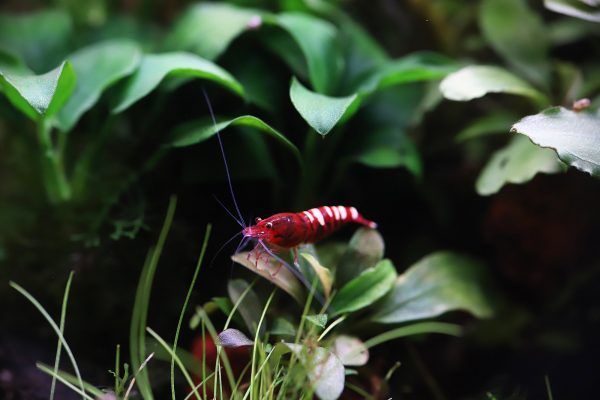
WHY DO AQUARIUM PRAWNS DIE?
At this point we are going to name which are the most common causes for which they usually die prawns:
Chlorine: Tap water contains chloramine and this is very harmful to prawnsIf we do not use osmosis water or an antichloro, this may be the cause.
Illness or stress: Sometimes the prawns can be sick and die shortly after introducing them to the aquarium, this we can know if the prawns have a dull color and are scary or if they present parasites clearly visible, during transport home or shipment in a package the prawns may become weak and die from stress.
Copper and heavy metals: Aquarium prawns are very sensitive to these substances that usually come along with tap water, it is advisable to use a conditioner antichlor to treat this water.
Quick acclimatization: When we are going to introduce the animals to the aquarium, they come in a water with different parameters and temperature of the one we have in the gambario, it is very important to introduce them little by little as we explained above for evitar the death of shrimp.
Excess and remains of food: When we feed prawns with more food than they can eat in a few hours, that excess food spoils and can cause high concentrations of ammonia and ammonia, these spikes can cause shrimp to die. To avoid this it is advisable to wear a routine maintenance adequate and siphon the substrate of the aquarium regularly.
Sudden changes in water temperature: When doing the water changes we must leave stand is at room temperature or introduce a heater in the change water so that the two to the same temperature, if we change a lot of water at once with different temperatures we could produce a thermal shock, one way to smooth this out may be to do the cdrip change of water.
aerosols: Insecticides, air fresheners, deodorizers and other household sprays that contain chemicals can pollute the aquarium water if it is used in the same room where we keep the aquarium.
Lack of maintenance: Apart from regular siphoning, evaporation of water and lack of water changes can result in a high concentration of salts in the water and harmful substances for the prawns.
High temperatures in summer: In summer the temperature of the environment usually rises, if the temperature of the prawn rises above 28 degrees the prawns begin to die, especially if we keep more delicate species such as Caridinas, this can be solved with the help of a cooler or a fan to lower the temperature of the water by surface evaporation, if we fill the evaporated water this must be pure or osmosis water.
Water change too abrupt: When we do maintenance, it is very important that the water we introduce to the aquarium have the same parameters than the water in the urn, it is recommended to make weekly water changes of 20% maximum and with a dropper so that the mixture between the two types of water is made progressively.
GAMBARIO PLANTS
Many low-requirement plants are valid for a shrimp aquarium. (As the Bucephalandra, Anubias, Microsorum, Bolbitis and other rhizome plants) These not only serve for decoration purposes, but also provide hiding places, this is especially important when moving, as they will be a little more vulnerable and prefer a dark and safe place, as well as areas for grazing and feed. The moss serve for that. Its fine density and ramification houses microorganisms and microalgae that make up a biofilm that serves as food especially to young prawnsMosses also store dirt, so it is advisable to keep them in small quantities or to keep them clean from time to time. The floating plants They can be useful to make a little shading and that the light is softer, in turn these plants are large nitrate users reason why they will help us to have a more purified water. Others hardy, fast-growing stem plants they can also serve this purpose.
These prawns continue to increase in popularity, especially in Planted Aquariums y Aquascaping aquariums. However, not all shrimp species are suitable for a planted aquarium.
All the ornamental shrimp they are a relatively heterogeneous group, there are many types of aquarium shrimp. Among them there are species that are not suitable for an aquarium with plants: Sulawesi prawnsFor example, they have very striking colors but require very special water parameters, very clean water with as little nitrate (NO3) and phosphate (PO4) as possible, but above all temperatures that are inappropriate for the vast majority of Aquarium plants. Other prawns are also unsuitable for true Planted Aquariums, since the use of fertilizers and the selection of plants would be very limited.
Prawn varieties like Caridina Pinto or the prawns Boa They can look spectacular, but are also not suitable for planted or aquascaping aquariums. This is due, on the one hand, to the fact that these varieties need to undergo high selective breeding until their patterns are fully established (which, for practical reasons, is an almost impossible task in a well-planted aquarium), In addition, these Prawns can react with molting problems at nitrate levels below 5-10 mg / l.
It has been observed that nitrate inhibits the absorption of iodine in these prawns raised and selected. Since iodine is absolutely crucial in producing the molting hormone, ecdysone, nitrate in an aquarium with shrimp breeding has a particularly damaging effect. Many of the aquatic plants More demanding require a slightly higher nitrate level, so their requirements collide with the parameters of the Caridina prawns advanced breeding.
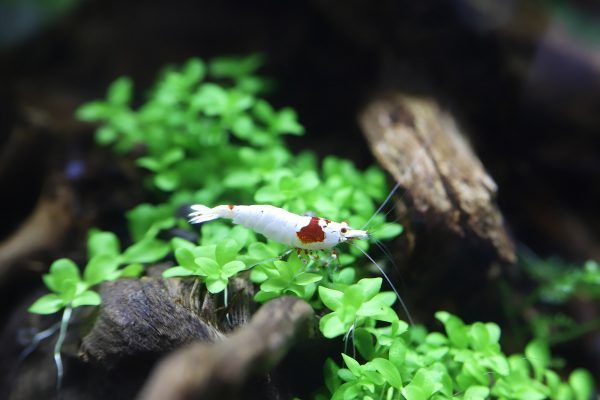
All the tiger prawns (Caridina mariae) and prawns Crystal red bee o Black bee (caridina logemanni), are not as sensitive and can withstand nitrate values between 10 and 25 mg / l. These beautiful shrimp are perfect for planted aquariums. They originate in habitats with soft to very soft water, and they also like water with a carbonate hardness low, which is perfect for many aquarium plants.
There are many types of shrimp for aquarium In addition to the Cristal and Tigers, you can find many pretty and quite robust color variants of the genre Neocaridin in planted aquariums. In the hobby, the species Neocaridine Davidi y Neocaridin Palmata have been firmly established. Unlike prawns Crystal or the caridines Tiger, Neocaridines They do not originate exclusively from clear and clean streams, but also from stagnant waters such as swamps and lakes. So they can deal with significantly higher nitrate values (up to 40 mg / l) and they are a lot less sensitive to water hardness: Any level is possible, from soft to hard water.
Neocaridines are available in a wide variety of colorations, from red and orange, from green to black, chocolate brown, light blue and dark blue and yellow, anything is there, many prawns, mostly female, have a bottom line of lighter color, we can find them under these trade names: Neocaridine Blue, Blue Velvet, Blue Diamond, Blue saphire, Red Cherry, Save Sakura, RedFire, Bloody Mary, Orange sakura, orange sunkist, Yellow Fire, Yellow neonetc) and there is also a variant Really of almost all these colors. The Rili prawns they are characterized by transparent areas in the middle of the body with an opaque color. Note that when different Neocaridine color variants are crossed, offspring may be wild colored, which means mostly transparent and with a dark pattern. If you want to keep the colors pure, you should not choose to fill the aquarium with Neocaridines of different varieties, although at first they look very good.
Be very careful when using CO2 in a shrimpAs it causes changes in pH and temporary hardness that can be too strong for shrimp. That is why we advise again and again the use of low requirement plants.
For aquariums planted with CO2 and demanding plants we can choose to introduce Neocaridines, which are more resistant and will not have any problem.
En Aquascaping aquariums y Planted Aquariums, active substrates are used because they soften the water and make it more suitable for aquatic plants thanks to its ion exchange capacity. Fundamentally, this principle is also a great idea for aquariums planted with shrimp. However, if you use running tap water for your weekly water changes, as you would probably do with a shrimp-free aquarium, you can cause quite severe fluctuations in water parameters. When aquatic plants are not concerned with assimilating this, shrimp suffer greatly and can react with molting problems. Therefore, it is advisable to work with adapted water from the beginning to avoid alterations. If the parameters of your tap water are very different from those of your aquarium, you should resort to RO (osmosis water) o demineralized water and adjust the corresponding parameters using a remineralizing salt suitable for Caridines or Neocaridines. Of course, these remineralizing salts should always be chosen according to the particular shrimp you are keeping. They are extremely easy to use: Simply add the salts to a container of osmosis water outside the aquarium and mix according to the manufacturer's instructions.
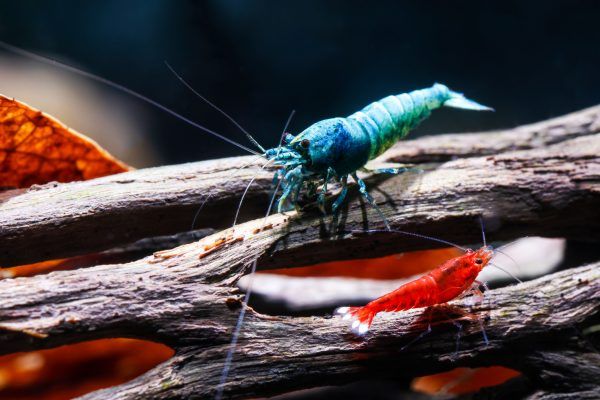
DECORATION, LEAVES, WOOD AND ROCKS FOR GAMBARIUM
If you want to maintain a colony of Crystal prawns (caridina logemanni), Taiwan prawns (Caridina sp.) Or any other type of prawn that requires soft water in your aquarium, you must be especially careful with the parameters of the water when the stones are part of the decoration.
In an aquarium with, for example, shrimp Shadow o bee shrimp, it is better not to use any material that hardens the water to begin with. If this is not possible for design reasons, you should ensure that the hardness is continuously reduced in the best possible way so that there are no sudden fluctuations in the water values.
The frequently recommended use of active substrate in combination with aquarium rocks that harden water has not been shown to be particularly useful for aquariums with soft water prawns long-term. Although the substrate constantly absorbs the lime released from the stones, it does not have infinite absorption capacities. If it is constantly “fed” with calcium carbonate, the buffering capacity of the substrate will soon be exhausted. As the active soil approaches saturation, carbonate hardness it will start to increase slowly and hardly noticeably. If you use active substrate in an aquarium with shrimp Of soft water biotopes and you use water hardening stones for the hardscape, you should always check if the substrate still works and measure the carbonate hardness regularly. If necessary, the saturated soil needs to be replaced.
Use a special ion exchange resin and constantly extracts lime from the aquarium water. The softener is installed in the filter water column and continuously softens the water.
To save you all this, the most recommended is use neutral rocks that do not alter the parameters of the water.
Or if you still want to ride a shrimp with all kinds of materials, just choose Neocaridin prawns they are equally beautiful but significantly stronger and have absolutely zero problems with the hardest aquarium water.
We can also use wood in the gambario, these reduce the Ph slightly in addition to providing beneficial tannins they have light antibacterial and antifungal effects.
The decoration based on natural elements for prawns as leaves or seeds They can be a good option that brings a more natural look to the shrimp aquarium In addition to offering a series of advantages similar to logs, they serve as food for prawns and they degrade over time, so you have to add them in moderation if we do not want to achieve polluting effects in the aquarium.
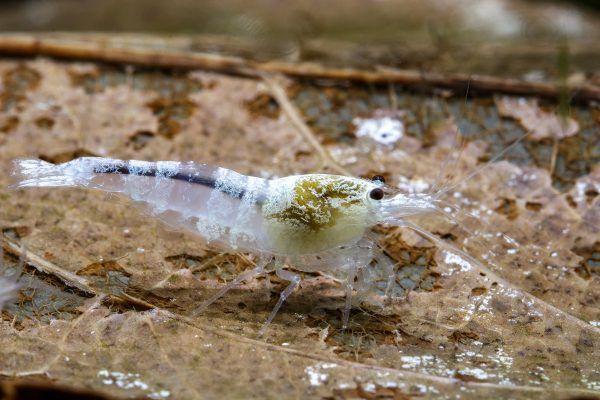
MEDICATIONS AND PRECAUTIONS
Because prawns and invertebrates in general they are more sensitive, there are some things to keep in mind. For example, Copper, copper-based medications and even some for fish that are not made from copper can seriously damage them. Always investigate if the medicine you want to use in your gambarian aquarium It is really safe or not before using it, as the wrong medicine can kill an entire colony of shrimp.
Always display wash plants and any new decorative elements before introducing it into the aquarium.
Si Planarians or Hydras have appeared in your shrimp You can know more about them and how to eliminate them in the article on this topic. our blog.
FISH FOR A GAMBARIO
If you are interested in keeping more than sweet aquarium prawnsPlease note that the average aquarium size for Caridines and Neocaridines is too small for most fish tropical. Almost all fish will also be eaten at baby prawns or even at adult prawnsWhich is not really what you want when trying to establish a large colony or breed some of the more expensive species.
If you want to keep your prawns 100% safe, keep a single species aquarium or maybe a few snails. Otocinclus species are also known to be very peaceful. The shrimp species Because they are relatively cheaper and reproduce much faster than Neocaridines, these aquarium shrimp can perform well in a community aquarium with others small fish and densely planted.
Small fish suitable for Nano Aquariums or Rasbora type species, can serve this purpose, taking into account that more than one baby shrimp will end up being the food of these fish.
STAGES OF ORNAMENTAL PRAWNS
Aquarium prawns go through different phases throughout his life, the life cycle of a prawn around the year and a half or two years, during this time they go through the following stages:
Breeding: Calves are called the newborn prawnsAs soon as they leave the egg they are young, the prawns that we commonly keep in aquariums are already born with a complete prawn shape, these prawns are erroneously called “zoeas” but zoeas would be the prawns that go through a larval stage when the The mother spawns, for example, the Caridina Japonica, which needs brackish water for its offspring to flourish and become shrimp.
The young are all those prawns newborns that do not exceed 5mm, the phase in which the prawn is a baby usually lasts about 4 weeks, during this process its growth is rapid and due to this they make a lot of changes, depending on your diet and especially the temperature, this stage can last more or less time and this is when prawn is more sensitive and delicate.
Young People: After the first stage, the prawns are called juveniles, here they are at a time when we still cannotknow exactly if they are male or female, but they are more robustas and have more survivabilityThis also depends on the species of shrimp that we keep, the Neocaridines being a little less demanding.
Adult: To reach this stage they had to pass about 5 months, this is when the prawns already are able to reproduce and we can differentiate between males and females, we can appreciate when a shrimp has reached the adult phase Especially in females when they are pre-fed, they show a spot on the back with the eggs that are forming and are not yet fertilized.
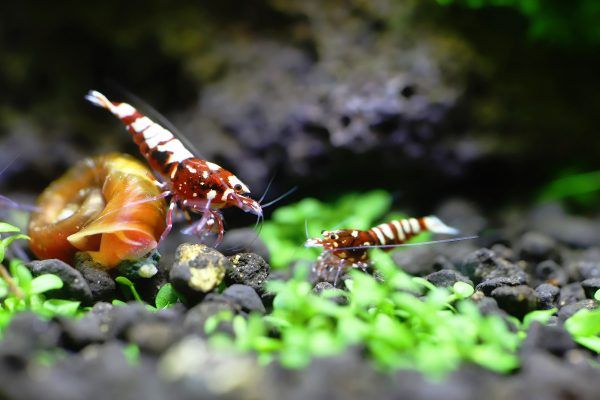
HOW TO KNOW IF THE PRAWNS ARE MALE OR FEMALE?
The differences to know the sex of prawns they are very easy if we look at some factors, first the shrimp must have reached some size, one of the main differences is that the females are larger than the males and also have a more intense and opaque coloration, this point is easier to differentiate in the Neocaridinas where the males can even present transparent areas. Depending on the coloration of the shrimp, we may not be able to see this stain clearly.
Another difference is that the females have a curved and oval "belly" while the males are more slender and their body has a more triangular shape, if in addition to having a rounded shape and a curved belly we see that the eggs are already aerating clearly it is a female.
REPRODUCTION OF NEOCARIDINE AND CARIDINE PRAWNS
All the prawns begin to reproduce without any difficulty if the temperature is not too cold and if they have sufficient access to food, if the prawns have stable parameters and are not stressed they will start to breed. If the aquarium is very small or overcrowded, the prawns may stop reproducing.
La shell molt it is the moment in which the prawns reproduce, at the moment in which an adult female makes a change of molt and her exoskeleton has not yet hardened is when the male will try to mate with her, fertilizing the eggs that she has in the back ”just behind the head.
El molting process is a critical time for shrimp and we must make sure to provide them with the mineral salts they need so that they can make the skin change, such as calcium and magnesium.
Usually the prawn eggs They are of a yellowish color that can turn brown shortly before the eggs hatch, in these last moments the eyes of the young can be seen inside the eggs in the form of small black dots, about 1 month after the eggs are fertilized they will hatch and we will be able to see the first baby prawns roaming the shrimp.
BREEDING AND SELECTION
To obtain a stable population in terms of coloration, careful care is required selection process by the caregiver. We will not go into depth on this topic because it would take a long time but tWe give some tips below.
Why do prawns need to be selectively bred?
If you would like to raise Aquarium Prawns, you must acquire some basic concepts about genetics. Surely you've heard of Mendel's hereditary laws. The genome of a living being is determined by the call genotypethat is, all of their genes. Certain characteristics, such as the coloration of a shrimp, are manifested in the phenotype, that is, in the external appearance.
In simple terms: Separate shrimp from breeding process whose appearance does not correspond to your final breeding objectives or your ideas as a breeder. Its characteristics may simply be unwanted due to gloomy coloration or less attractive patterns, but also to prevent inherited defects from being passed on to the next generations.
La selective breeding It makes a lot of sense. Remove specimens from your breeding aquariums that do not meet your standards, and do so before they reach sexual maturity. In this way, you will have a group of prawns with the desired phenotype, with the aim that the corresponding genotype will be consolidated over the next generations.
In order to see the young, aquariums intended for this purpose must not be densely planted. In general, breeding aquariums they are kept clean, preferably with removable elements. Mosses and plants tied to pieces of rocks, ceramic objects or small woods.
When removing the planted decoration, it is very common that young prawns stick to plants. If you want to avoid removing them from the aquarium along with the plants, you should remove the decoration pieces and shake them slowly and gently under water.
What to do with the discards?
As animal lovers, we also treat shrimp responsibly and those that do not meet our breeding objective. A good solution for low-quality prawns with little color coverage or unwanted patterns would be, for example, a separate aquarium dedicated to discards. Alternatively, those shrimp could be sold to other fans for little money, or given to your friends for free.
Prawns with visible deformities such as exposed gills or deformed shells should be removed from the breeding cycle definitely. It is necessary to prevent genetic defects from reproducing and transmitting. In an aquarium with fish they could get together with small predators, such as small tetras that possibly end up feeding on the baby prawns. Dedicated and separate aquariums for males and females are also feasible, there are no limits to the breeder's imagination.
Other articles of interest may be:
Hydras and Planarians in the Gambario - How to eliminate them
Gambario Leaves - Benefits and Properties
Rate this article:
In our online store for aquarium prawns you will be able to obtain articles for the maintenance of prawns and receive them within 24 hours in Spain.
Buy Items Aquarium Prawns



